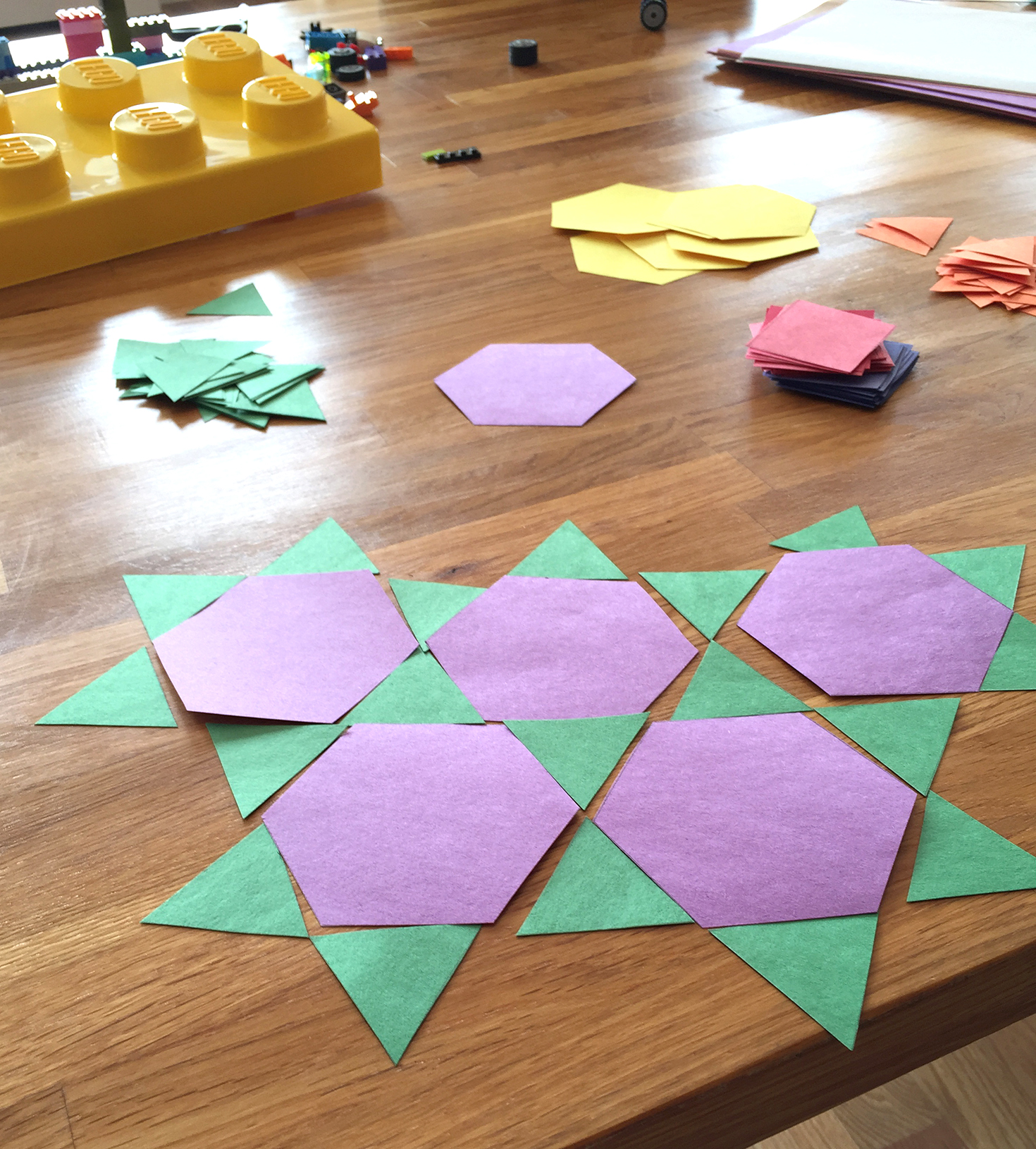

Other units that refer to tessellating are Keeping in Shape, Level 3 and Fitness, Level 4. Hence they will see how mathematics, art and even nature interact. You can easily find one by entering his name in your search engine.īy emulating Escher and exploring tessellations in this unit, the students will gain a greater appreciation of the way that tessellations work. There are many web-sites that explore the life and work of M.C. With regard to tessellations, Escher took a tessellation and, by adding and subtracting from the basic unit of the tessellation, turned it into a repeated picture. As you follow the men around and up their particular flights, you realise that they are going round and round.

A typical impossible situation shows four men climbing stairs. One of these involves impossible situations and the other is his variation on the theme of tessellations. Used by permission.Įscher is famous for two types of engravings.

Escher works (C) Cordon Art, Baarn, the Netherlands. He studied at the School of Architecture and Decorative Arts in Haarlem but soon gave up architecture in favour of graphic arts at the age of 21.Īll M. Escher was born in Leeuwarden, Netherlands on June 17th, 1898. Once your shape is traced, slide your tessellation to the immediate left, right, top, or bottom of your tracing, and trace again.This unit is built around the famous artist Maurits Cornelius Escher. Trace your tessellation creation onto a sheet of paper. Tape the four pieces together to create a single tile.ħ. Re-arrange the shapes such that the letters meet in the middle and they spell the word "TRAP".Ħ. Cut along your lines, yielding four separate shapes, each with a single letter.ĥ. Draw another funky line vertically down the paper, separating the two sections into a total of four sections.Ĥ. Take a pencil and draw a funky line horizontally across the paper, separating the 'P' 'A' side from the 'R' 'T' side.ģ. Take a square piece of paper and write the letters 'P', 'A', 'R', and 'T' in each corner.Ģ. Ready for a more complex challenge in creating amazing tessellations? The "PART" to "TRAP method is a great way to create a unique shape that you can trace over and over again on paper for an intricate tessellation design!ġ. Fit all of your new tessellation pieces together to create a beautiful, puzzle-like work of art! Very important -be sure to maintain the same orientation of your cut-out shape every time you tape it!ħ. Repeat Step 4 and Step 5 for each of your remaining squares. Tape your cut-out shape to that side of the square, lining up the long flat edges.Ħ. Rotate the square by 90˚(one corner in either direction) so that you have a fresh, flat, un-cut edge of the square facing you. Take one of your squares and cut out your tracing.ĥ. You should now have four squares of paper, each with your shape traced out in the same way.Ĥ. Ensure that your oddly-shaped cut-out is facing the same way every time you trace it. Repeat for each of the remaining three squares. Trace your cut-out onto the square with your pencil.ģ. Line your oddly-shaped cut-out on top of a second square of paper, lining up the long edges. (So if you start cutting from the bottom side of the square, make sure your scissors finish cutting on the bottom side of the square!)Ģ. Take one square piece of paper and cut a weird shape out of one side of the square. Start with five squares of paper that are the same size.ġ. Great for beginner cutters, and a great next step into more complex tessellation making.Ġ. Do they fit together? Try creating more complex shapes, like fish, flowers, or even dinosaurs! Now try drawing that shape again immediately next to the first shape. Step it up: Ready for a harder challenge? Skip Step 2 and just try drawing a shape on a piece of paper. If your shapes are fitting together perfectly, keep drawing them in each row until your entire sheet is filled up.ĥ. Do they fit together perfectly? What if you draw a third shape immediately next to the second shape? Do they still fit together perfectly?Ĥ. Draw that shape again immediately next to your first shape. In one row, draw a simple shape that spans the entire height of the row (see image above), such as a square, triangle, a lopsided rectangle (parallelogram), or other shape of your choice. Divide the paper up into equal width rows (or columns) about 3-4 rows for a small sheet will work very well.ģ. We recommend starting with half of a regular 8.5" x 11" white sheet of paper.Ģ. Start with a piece of paper and a pencil.

No cutting is involved for this starter tessellation design, making it a great starting project for younger artists.ġ.


 0 kommentar(er)
0 kommentar(er)
